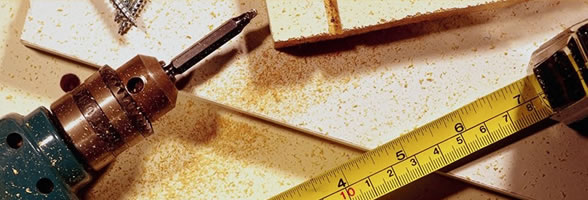
Sexual Reproduction in Flowering Plants
- Asexual reproduction involves only one parent
- Sexual reproduction – union of 2 sex cells capable/gametes
- 2 parents
- Meiosis essential as it halves chromosome number
- Off-spring show variation
- Gametes – haploid cells capable of fusion
- Gamete + gamete = zygote
 Carpal = pistil
Carpal = pistil
- Receptacle – floral parts arise from this & it supports these parts
- Sepals – protect flower when it’s a bud
- Petals – attract animals in animal-pollinated flowers
- Stamen – male parts of flower made up of anther & filament
- Carpel – female parts of flower made up of stigma, style, ovary

- meiosis produces pollen grains
- pollen grains divide by mitosis (form male sex cells/gametes)

- Anther has 4 chambers (pollen sacs)
- Epidermis & fibrous layer protect pollen sac
- Tapetum stores food and supplies energy for cell division
- Pollen mother cells divide by meiosis to produce tetrad of pollen (4 in cluster)
- Tetrad separates – 4 separate pollen grains
Female gamete formation
- Ovule surrounded by 2 walls – integuments
- Micropyle – opening in integuments where pollen tube can enter
- Nucellus – supplies nutrient for later growth in ovule
- Megaspore mother cell (diploid) undergoes meiosis to produce 4 haploid cells
- 3 cells degenerate leaving embryo sac
- Embryo sac undergoes mitosis 3 times to form 8 haploid nuclei
- 2 polar nuclei & egg cell = female gametes

- Pollination – transfer of pollen from anther to stigma of a flower from same species
- Self-pollination – between same plant
- Cross-pollination – between different plants of the same species
Table: adaptations of flowers to wind or animal pollination
|
Wind |
Animal |
|
Petals: small (absent), not brightly coloured (green), no scent, no nectaries |
Petals: Large, brightly coloured, scented, have nectaries |
|
Pollen: large amounts, light, small, dry, smooth |
Pollen: small amounts, heavy, large, sticky, spiny |
|
Anthers: large, outside petals, loosely attached to filament |
Anthers: usually small, inside petals, firmly attached to filament |
|
Stigmas: large and feathery, outside petals |
Stigmas: usually small and sticky, inside petals |
- Fertilisation – union of male & female gametes to form a diploid zygote

- Pollen lands on stigma
- Tube nucleus moves down style towards chemicals released from ovule (chemotropism) forming pollen tube
- Generative nucleus divides by mitosis as moves down pollen tube to form 2 sperm nuclei
- Tube nucleus degenerates at micropyle
Double fertilization
- One sperm nucleus (n) + egg nucleus (n) = diploid zygote (2n)
- Other sperm nucleus (n) + 2 polar nuclei (n) = triploid endosperm nucleus (3n)
Seed formation
- Fertilised ovule forms seed
- Integuments dry up and form testa
- Zygote (2n) forms radicle (future root) & plumule (future shoot) by repeated mitosis
- Embryo cells form cotyledons (seed leaves)
- Endosperm nucleus (3n) forms endosperm (acts as food store) by repeated mitosis
- Non-endospermic seed – no endosperm when fully formed e.g. broad bean
- Endospermic seed – contains some endosperm when fully formed e.g. maize, corn
- Monocots – food stored in endosperm
- Dicots – store food in cotyledons (sometimes endosperm aswell as cotyledons)
Development of fruit
- Petals wilt – embryo develops – seed develops from ovule – fruit develops from ovary – fruit ripens + flower parts fall away
- true fruit = grape
- False fruits develop from other parts of flower besides ovary e.g. apple, strawberry
Changes in flower after fertilisation
|
Before |
After |
|
Ovule |
Seed |
|
Integuments |
Testa (seed coat) |
|
Nucellus |
Endosperm (cotyledons) |
|
Egg |
Zygote (embryo – plumule, radicle, cotyledons) |
|
Polar nuclei |
Endosperm |
|
Ovary |
Fruit |
|
Ovary wall |
Pericarp (fruit wall/coat) |
Parthenocarpy - development of a fruit without a seed i.e. egg not fertilised
Can be formed: - genetically, spray plants with growth regulators (ethene)
Dispersal – transfer of seed/fruit away from parent plant to :
- Avoid competition
- Increase chance of survival
- Find new areas for growth
- 4 methods: wind (dandelion, sycamore), water (water lilies), animal (sticky fuits e.g buttercup) or (edible fleshy fruits e.g. strawberry, blackberry), self-dispersal e.g. peas
Dormancy – resting periods where seeds undergo no growth & have reduced cell activity/ metabolism
Causes: Growth inhibitors
Testa impermeable to water/oxygen
Testa too tough – embryo can’t emerge
Lack of growth regulator
Advantages: Plants avoid harsh conditions
Time for embryo to develop fully
Maximises growing season
Germination – regrowth of embryo after period of dormancy if environmental conditions are suitable.
Conditions required W.O.W
Water Oxygen Warmth (temp.)
- Also dormancy must be complete
Main events in germination
- Seed absorbs water
- Stored foods digested by enzymes in seed
- Digested foods transferred to embryo from cotyledons/endosperm
- -some digested foods make new structures
-some used in respiration
- Radicle grows down & bursts through testa
- Plumule emerges above ground
- New leaves form
2 forms of germination: -cotyledons stay below ground e.g. broad bean
-cotyledons move above ground & form first leaves e.g. sunflower
Experiments related to this chapter:
- Effect of water, oxygen & temperature on germination (no growth if all 3 are not present)
- Show germinating seeds produce digestive enzymes (dead (boiled) seeds don’t digest starch – all agar is blue black. In the live seed (unboiled) starch is digested (clear areas occur on blue black agar where digestion has occurred)
Useful videos:
https://www.youtube.com/watch?v=Gq8NWh98wQs
https://www.youtube.com/watch?v=V5yya4elRLw&feature=related
